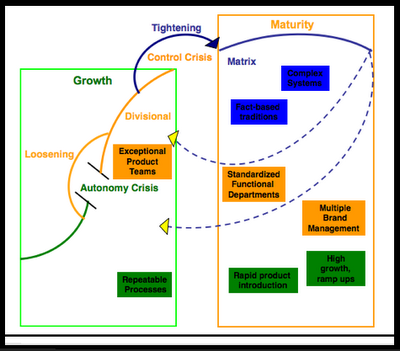Reports from the Knowledge Labs about our recent findings, research topics, and interviews with lifestyle leaders who are creating their own futures.
|
|
| |
How to stimulate your own powers of foresight. Consider the following thought provokers. Ask yourself, in these categories what are the brand new trends and forces? Which are the ones growing in importance? Which current forces are loosing their steam? Which have peaked or are reversing themselves? Which are the "wildcards" about to disrupt us in the future? POLITICAL AND TECHNICAL thought for food: Electronics, Materials, Energy, Fossil, Nuclear, Alternative, Other, Manufacturing (techniques), Agriculture, Machinery and Equipment, Distribution, Transportation (Urban, Mass, Personal, Surface, Sea, Subsurface, Space), Communication (Printed, Spoken, Interactive, Media), Computers (Information, Knowledge, Storage & Retrieval, Design, Network Resources), Post-Cold War, Third World, Conflict (Local, Regional, Global), Arms Limitation, Undeclared Wars, Terrorism, Nuclear Proliferation, Weapons of Mass Destruction, Governments (More/Less Power and Larger or Smaller Scale), Taxes, Isms: Nationalism, Regionalism, Protectionism, Populism, Cartels, Multinational Corporations, Balance of Trade, Third Party Payments, Regulations (OSHA, etc.) Environmental Impact, U.S. Prestige Abroad. SOCIAL AND ECONOMIC Food for thought:
Labor Movements, Unemployment / Employment Cycles, Recession, Employment Patterns, Work Hours / Schedules, Fringe Benefits, Management Approaches, Accounting Policies, Productivity, Energy Costs, Balance of Payments, Inflation, Taxes, Rates of Real Growth, Distribution of Wealth, Capital Availability and Costs, Reliability of Forecasts, Raw Materials, Availability and Costs, Global versus National Economy, Market versus Planned Economies, Generations: Y, X, Boomers, Elderly, Urban vs. Rural Lifestyles, Affluent vs. Poor, Neighborhoods and Communities, Planned or Organic Growth.
Got Knowledge?
|
|
| |
|
|
|
|
The Journal of 2020 Foresight
|
|
| |
|
Thursday, August 24, 2006

The Matrix: Tightening and Controlling Complexity with Expert Systems
Chapter Four: The Tribal Territories
By Steve Howard, CKO
The Knowledge Labs
Table of Contents
Chapter One: Basecamp
Chapter Two: The Ridge
Chapter Three: The Outpost
Chapter Four: The Tribal Territories
"'In this world you better do it right -- you don't get to pick up and move to the next town so easily,' said Dov Seidman, who runs a legal compliance and business ethics consulting firm, LRN. 'In the world of Google, your reputation will follow you and precede you on your next stop. It gets there before you do....'"
Thomas L. Friedman, "The World is Flat"
DOUBLE NICKEL RANCH. Agents faced their “Leadership Crisis” by recruiting Athletes to bridge the gap between organic and functional structures. Athletes bridged the “Autonomy Crisis” by loosening what Athletes tightened with the assistance from Associates. The resulting divisional structure eventually outlasts its usefulness when it triggers the “Control Crisis” that Academics help bridge by tightening and centralizing operations in a complicated matrix structure featuring data-driven methods and systems.
Journal of 2020 Foresight: As more functional departments proliferate the Agents disappear, not fitting into cultures built to reward affiliation and mastery. And, the days of the maverick, do-what-ever-it-takes team loyalty -- highly rewarded for fire-fighting heroics become numbered. What contributes to the Athlete-unfriendly culture?
Explorer: They don’t appreciate becoming “just a number.” With growing maturity, size and complexity dictate that the “new market athletes” leave in favor of the complex system specialists and their emphasis on fact-based decision making and problem solving throughout the enterprise. Just as the diagonal line between Agent and Associate identifies the path of highest resistance, so to does the line from Embodied Knowledge (Academics) to Emerging Knowledge (Athletes).
J2020F: This is the time of transition from a purely Associate to a more Academic organization?
Explorer: Yes, The “tightening bridge” provides a path from divisional “redundancies” brought about by local decisions to complicated central control offering efficient deployment of resources throughout the enterprise.
J2020F: So, by following the path of least resistance, the organization begins to tilt in favor of professionals often certified by “Traditional Institutions” in the methods of managing complex systems and advised by “Brand-As-Experts about best practices on the other side of “the border” from Associate “Analytical Specialists?”
Explorer: Yes. But as in all things in life, too much of a good thing over long periods of time -- over “professionalization” without the innovators or the go-to-marketers -- sets the conditions for decline as former loyal customers sense it’s time to move on, as well.
J2020F: Why?
Explorer: At this stage of development most of the focus by the organization is on inside operations and not enough on customers – their care and feeding. It’s as if the customers – frequently in large numbers – are taken for granted.
J2020F: And that sets up yet another opportunity to bonk?
Explorer: You bet, as we will see.
Got Knowledge?
Copyright ©2002 - 2006 Aarnaes Howard Associates. All rights reserved worldwide.
6:48 AM
|
|
| |
|
|
|